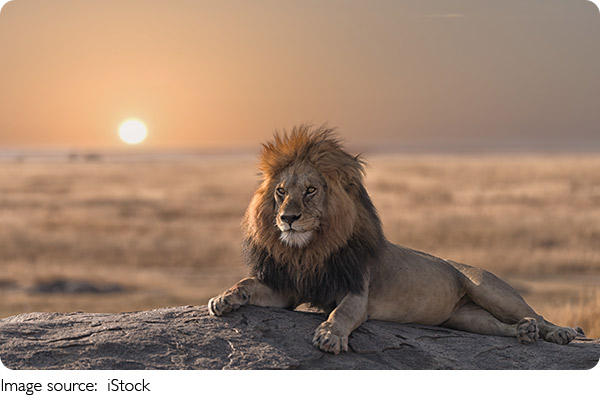Lion Roar

Have you ever imagined hearing a roar echo across the grasslands, strong enough to make birds scatter and animals freeze? That’s the lion—nature’s loudest big cat and one of the most respected animals in the wild.
But there’s so much more to lions than their voice. Let’s explore their lives, their habits, and why we still call them the kings of the savanna.
Where Lions Actually Live
Lions aren't found everywhere, but where they do live, they rule. We can find them mostly in sub-Saharan Africa, roaming through grasslands, open woodlands, and dry savannas. A smaller group still survives in the Gir Forest of western India. Although they once lived across southern Europe and much of Asia, their range has shrunk a lot over time due to human settlement and habitat destruction.
The Voice That Travels Miles
One of the most amazing things about lions is their roar. We might think it’s just for show, but it actually has a purpose. Lions roar to communicate with others in their pride and to warn rivals to stay away. Their roar can be heard up to 5 miles (8 kilometers) away! That’s one of the loudest sounds any land animal can make. It’s no wonder other animals take notice when a lion speaks.
The Power of Living in a Group
Unlike other big cats that live alone, lions form groups called prides. A pride is like a team—made up of related females, their young, and a few dominant males. Living together gives them strength: they hunt more effectively, defend their land, and protect their cubs as a team. We often see females staying with the pride for life, while males come and go, challenging each other to take control.
Why Females Lead the Hunt
Even though males often get the attention, it’s the lionesses who do most of the hard work when it comes to hunting. They work together, often circling and closing in on prey like wildebeests, zebras, and gazelles. Their teamwork helps them outsmart fast or strong animals, which would be hard to catch alone. Once they succeed, everyone in the pride—young and old—gets a share of the reward.
Lions Are Born to Rule
With powerful limbs, sharp claws, and keen senses, lions are built for leadership on the savanna. They don’t just chase animals—they plan, wait, and strike at the right moment. They’re fast, too—reaching speeds up to 50 miles per hour (80 km/h) in short bursts. No wonder few animals challenge a lion, and fewer still survive if they do.

The Struggle Behind the Strength
But being king isn’t easy. Lions face many threats today. Their natural homes are shrinking, and they sometimes come into conflict with farmers protecting livestock. In some places, illegal hunting has made things worse. Today, lions are considered vulnerable, meaning their population is shrinking and needs urgent protection.
Two Main Types of Lions
Scientists now recognize two major types of lions:
- Northern lions are found in India and parts of North, West, and Central Africa.
- Southern lions live in East and Southern Africa.
These groups are not just separated by location—they’ve adapted to their environments in different ways, and their genes even show key differences. Conservationists now treat them as separate groups when making protection plans.
Why Lions Matter to Us
Lions play a big role in keeping the ecosystem balanced. They help control the populations of herbivores, which affects the growth of grass and plants. But beyond science, lions also inspire us. We see them in stories, symbols, and legends around the world. They stand for courage, pride, and family—values we all share.
How We Can Help Lions Thrive
We can support lion conservation by learning, donating to wildlife projects, or choosing to visit responsible wildlife parks. Even just sharing what we learn about lions can raise awareness. If we work together, we can help lions keep roaring for generations to come.
Let’s Roar Together!
So Lykkers, did you know lions could be this loud, this smart, and this connected as a group? Which lion fact surprised you the most? Tell us your favorite thing about lions—or what you’d want to see if you met one in the wild! Let’s keep exploring the wonders of nature—together.
Lions Roaring Compilation
Video by George Cuevas

 · Animal Team
· Animal Team